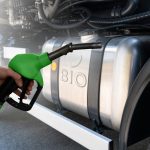The introduction of a government-backed HECS-style loan system could help everyday Aussies make their homes more energy efficient.
The scheme would allow households to access flexible, low-cost loans, similar to HECS, to purchase and install solar panels, batteries, efficient electric appliances and even EV vehicles.
Experts say such a program would help Aussies save up to $5000 a year permanently on power and petrol bills while making homes more energy-efficient and resilient to reduce demand and reliance on the primary power grid.
The proposal, called the Electrifying Everything Loan Scheme (EELS) forms a significant part of Rewiring Australia’s 2024-2025 Pre-Budget Submission to the Australian Government.
Dr Saul Griffith, Rewiring Australia’s Chief Scientist, says such a scheme would provide considerable bill relief to those struggling to make ends meet due to the cost of living crisis.
“If the government makes an investment like HECS, it will deliver permanent cost-of-living relief, solve the problem of light vehicle pollution and propel Australia to the top of the class in climate action,” he said.
“If we move aggressively to electrify homes and vehicles, consumers will save $1.1 trillion by 2050, and if funded by flexible finance like EELS, the real cost to the budget will be just one-twentieth of the consumer savings.”
The EELS would allow loans to be secured on the property title and, like HECS, would be indexed to inflation.
There would be the option to repay the loan only once the property was sold, allowing property owners to take advantage of the cost-of-living savings in the meantime at no cost.
Dr Griffith says the scheme’s implementation would cost the same as providing temporary energy bill relief to aid energy price spikes, only this time with permanent results, while also cementing Australia’s place as a world leader in electrification.
“The cost to the taxpayer of financing household electrification is roughly the same as providing temporary energy bill relief each time there is an energy price crisis. The benefit of household electrification is a permanent reduction in energy costs, not a temporary subsidy to fossil fuel companies,” he said.
“One-third of households have already invested in rooftop solar, which generates at 5 cents per kilowatt hour, which makes it the world’s cheapest energy. Australia can go from being the world’s leading rooftop solar nation to becoming number 1 in electrification, the most powerful climate solution available.”
An EELS would help speed up Australia’s electrification process, with Aussies already expected to spend around $2 trillion on electric vehicles and appliances by 2050, regardless of government interventions.
It is expected to cost up to $2.8 billion to establish while delivering complementary policies to reduce the costs of electrification for consumers and maximise savings.
The Rewiring Australia 2024-2025 Pre-Budget Submission
- $300 million to establish EELS administration
- $2 billion to make provision for loan concessions
- $340 million to demonstrate intensified electrification in select areas.
- $95 million to build networks of medium-speed level 2 EV chargers
- $10 million to make the National Electricity Market more competitive.
Full adoption of household electrification and vehicles would allow the nation to decarbonise the power grid, eliminating 25 per cent of the nation’s total emissions.
Rewiring Australia Executive Director, Dan Cass says implementing a HECS-style loan scheme will help bring affordable, clean energy to all Australians.
“Past Labor governments created universal primary health care through Medicare and universal access to tertiary education through HECS,” he said.
“Every Australian, regardless of financial status, should contribute to and benefit from the green energy transition.”







